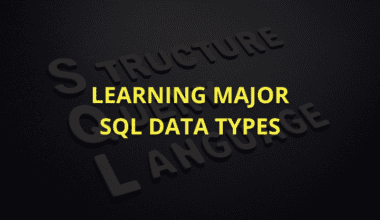Summary: Associative classification in data mining combines association rule mining with classification for improved predictive accuracy. It identifies hidden patterns, enhances decision-making, and is widely used in retail, healthcare, and banking. Despite computational challenges, its interpretability and efficiency make it a valuable technique in data-driven industries.
Introduction
Data mining involves analysing large datasets to discover hidden patterns and relationships. One of its key techniques is associative classification in data mining, which combines association rule mining with classification to improve predictive modelling.
This method identifies strong patterns that can predict outcomes based on specific attributes, offering valuable insights for businesses. This blog aims to explain associative classification in data mining, its applications, and its role in various industries.
As the data mining tools market grows, valued at US$ 1014.05 Mn in 2023, with an estimated CAGR of 11.8%, the importance of such techniques continues to rise.
Key Takeaways
- Associative classification merges association rule mining with classification for better predictive accuracy.
- It identifies hidden patterns in data, making it useful for decision-making across industries.
- Key applications include fraud detection, customer segmentation, and medical diagnosis.
- Compared to decision trees and SVM, it provides interpretable rules but can be computationally intensive.
- Popular tools for implementing it include WEKA, RapidMiner, and Python libraries like mlxtend.
Fundamental Concepts
In understanding associative classification, it’s essential first to grasp its fundamental concepts: association rules and classification. These two concepts, while interrelated, serve different purposes in data mining. Let’s explore each in detail.
Association Rules
Association rules are fundamental in discovering relationships or patterns between variables in large datasets. They describe how the occurrence of one item is associated with the occurrence of another. An example is in retail, where purchasing bread may be related to buying butter.
Association rules are defined by two main components: antecedents (the “if” part) and consequents (the “then” part). For example, in the rule “If a customer buys milk, then they are likely to buy bread,” the antecedent is “buying milk” and the consequent is “buying bread.”
Association rules are categorised into:
- Single itemset rules: Involve the relationship between a single item and another.
- Multi-itemset rules: These rules show associations among multiple items, often uncovering more complex patterns.
Classification: How it Differs from Association Rules
Classification is a supervised learning technique that aims to predict a target or class label based on input features. Unlike association rules, which highlight relationships, classification assigns items to predefined categories.
For instance, a classification algorithm could predict whether a transaction is fraudulent or not based on various features. In contrast, association rules would focus on the patterns between the items involved in the transaction. In essence, classification concerns categorising, while association rules focus on uncovering hidden patterns between data elements.
Working of Associative Classification
In this section, we’ll explore how associative classification works, focusing on the process flow from rule generation to classification and the role of algorithms in facilitating this method.
Process Flow
The process of associative classification begins with the discovery of association rules. These rules are formed based on patterns that emerge from the dataset, typically as “if-then” statements. For example, an association rule might state, “If a customer buys bread and butter, then they are likely to buy jam.”
Once these association rules are generated, the next step is to evaluate their relevance and usefulness for classification. Each rule is associated with a class label (the target variable). The rules are filtered based on criteria like support (the frequency of the rule in the dataset) and confidence (the likelihood of the rule being true).
After filtering, the classifier selects the most relevant rules. The process continues by applying the rules to assign a class label to a new, unseen instance. The rules are ranked by accuracy, and the class label assigned to the new instance is determined by the highest-ranked rule(s) that match the instance’s attributes.
In summary, the process flow can be described as:
- Rule generation from the data using association rule mining.
- Rule evaluation based on support, confidence, and relevance.
- Classification of new instances based on matching the highest-ranked rules.
Role of Algorithms in Associative Classification
Algorithms play a crucial role in associative classification by automating the rule generation, evaluation, and classification process. Several algorithms are explicitly designed for associative classification, each with its method of handling rules and classification tasks.
One of the most popular algorithms is the Apriori-based algorithm, which first generates frequent itemsets (sets of items that appear together in the dataset) and then derives association rules from these itemsets. The rules are then applied for classification purposes.
Other algorithms, like CBA (Classification Based on Associations), integrate association rule mining directly into the classification process, optimising both tasks for better accuracy.
The algorithms focus on identifying the most significant patterns in the data, ensuring that the classification process is efficient and accurate. They also help reduce computational complexity by pruning irrelevant or low-confidence rules.
In essence, algorithms in associative classification streamline the entire process, making it easier to extract valuable insights from large datasets and apply them to real-world problems.
Applications of Associative Classification
Associative classification is a versatile technique used across multiple industries to improve decision-making and predictive analytics. Its ability to uncover hidden patterns in data makes it valuable for businesses and organizations. Here are some key use cases:
- Retail: Identifying customer buying patterns, improving product recommendations, and optimising inventory management.
- Healthcare: Predicting patient outcomes, diagnosing diseases, and personalising treatment plans based on historical data.
- Banking: Detecting fraudulent activities by analysing transaction patterns and customer behaviours.
- Telecommunications: Segmenting customers for targeted marketing campaigns and optimising service offerings.
These industries leverage associative classification to enhance operational efficiency and drive growth.
Advantages and Challenges
While associative classification offers numerous benefits, it also comes with its own set of challenges, mainly when applied in real-world scenarios.
Advantages
One of the main advantages of associative classification is its ability to discover hidden patterns and relationships within large datasets. This technique can handle high-dimensional data efficiently, allowing businesses to make data-driven decisions.
Additionally, associative classification generates interpretable rules that domain experts can understand and apply. It also helps improve predictive accuracy by leveraging association rules and classification models. As a result, this method is beneficial in applications like market basket analysis, fraud detection, and personalised recommendations.
Challenges
Despite its advantages, associative classification comes with some limitations. One of the key challenges is scalability—processing large datasets with millions of records can be computationally expensive. In real-world scenarios, noise and irrelevant attributes may distort the quality of the generated rules, reducing their effectiveness.
Additionally, selecting the correct parameters for rule generation can be complex and require fine-tuning. The computational cost and complexity of implementing associative classification in large-scale operations can pose significant challenges.
Comparison with Other Classification Techniques
Associative classification differs from traditional classification methods like decision trees and support vector machines (SVM). Understanding these differences can help determine when to use each technique based on the nature of the data and the problem at hand.
Associative Classification vs. Decision Trees
Decision trees are one of the most popular classification techniques, relying on a tree-like model of decisions and their possible consequences. While decision trees are easy to interpret and effective for many problems, they can suffer from overfitting when dealing with complex datasets.
In contrast, associative classification generates classification rules from frequent itemsets, which are then used to predict outcomes. Unlike decision trees, which recursively split the data based on features, associative classification focuses on discovering relationships between attributes.
This method often results in better accuracy when dealing with large and complex datasets, as it doesn’t suffer from the overfitting problems typically encountered in decision trees. However, associative classification can be computationally expensive, especially when handling large datasets.
Associative Classification vs. Support Vector Machines (SVM)
Support Vector Machines (SVM) are widely recognised for their ability to classify high-dimensional data by finding a hyperplane that best separates classes. SVMs are robust and effective for problems like text classification and image recognition. However, they can be challenging to interpret, especially in non-linear boundaries or high-dimensional feature spaces.
On the other hand, associative classification is inherently more interpretable, as it produces a set of understandable classification rules. While SVMs perform well in various complex, high-dimensional datasets, associative classification excels in problems where discovering relationships between data features is key.
The trade-off here is that while SVMs are powerful, they might require more effort to understand the underlying patterns, which associative classification provides naturally through the rules it generates.
Tools and Software for Associative Classification
In associative classification, various tools and platforms are designed to simplify the process of rule generation, data mining, and classification. These tools enable data scientists and analysts to build models efficiently, handle large datasets, and derive meaningful insights through association rules. Let’s explore some of the popular software solutions that support associative classification.
WEKA
WEKA is a widely used open-source software suite for data mining tasks, including associative classification. It provides a collection of Machine Learning algorithms for data mining tasks such as classification, regression, clustering, and association rule mining.
WEKA’s user-friendly graphical interface allows users to preprocess data, apply algorithms, and evaluate models easily. Implementing associative classification in WEKA helps users discover associations in large datasets, making it an excellent choice for both beginners and experienced data miners.
RapidMiner
RapidMiner is another powerful, open-source platform for Data Science, offering robust support for associative classification. It provides a graphical interface for users to design, execute, and deploy data mining workflows without extensive programming knowledge.
RapidMiner supports various data mining operations, including classification, clustering, and association rule mining. Its extensibility through add-ons further enhances its ability to perform associative classification by integrating advanced algorithms and techniques.
R and Python Libraries
Both R and Python offer several libraries that support associative classification tasks. In R, packages like arules and RWeka are commonly used to mine association rules and integrate them into classification models.
On the other hand, Python offers libraries such as mlxtend and pyfpgrowth, which provide easy-to-use functions for generating association rules that can be applied to classification tasks.
These tools and platforms provide a range of options for building and deploying associative classification models, making the process accessible to users with varying levels of expertise.
Closing Words
Associative classification in data mining merges association rule mining with classification to enhance predictive accuracy. Uncovering hidden relationships in large datasets provides valuable insights for various industries, from retail and healthcare to banking. Despite computational challenges, its ability to generate interpretable rules makes it a powerful technique for decision-making.
Compared to traditional classification methods, it identifies complex patterns, making it particularly useful in applications like fraud detection and market basket analysis. With the growing importance of data mining, mastering associative classification can help businesses optimise operations and improve predictive modelling for better strategic planning.
Frequently Asked Questions
What is Associative Classification in Data Mining?
Associative classification in data mining combines association rule mining and classification to enhance predictive accuracy. It generates rules from frequent itemsets, assigns class labels, and applies them for classification, making it useful for fraud detection, recommendation systems, and medical diagnosis applications.
How Does Associative Classification Differ From Traditional Classification Techniques?
Unlike traditional classification methods like decision trees and SVM, associative classification discovers relationships between attributes using association rules. It generates interpretable classification rules based on frequent itemsets, making it ideal for complex datasets where understanding patterns is crucial. However, it can be computationally intensive for large datasets.
What are the Key Applications of Associative Classification in data Mining?
Associative classification is widely used in industries like retail (customer buying patterns), healthcare (disease prediction), banking (fraud detection), and telecommunications (customer segmentation). Uncovering hidden data relationships helps businesses improve decision-making, enhance predictive accuracy, and optimise operations for better efficiency and growth.




